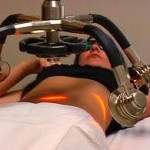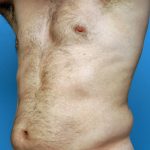
However, this satisfaction rate is based on a patient population that is almost exclusively women. When asked by a husband of a patient that I was treating for another plastic surgery problem about how well the Zerona would work for him and his big belly, my answer was both hesitant and reserved. It was at this point that I launched into an explanation of the anatomy of abdominal fat.
Fat in the abdominal area is comprised of several very distinct anatomic locations or layers. When most people think of abdominal fat they are thinking of what exists in the subcutaneous layer, that fat that lies between the skin and the abdominal muscle wall. I would call this superficial abdominal fat. But deep to this on the other side of the abdominal muscles lies intra-abdominal or the deep fat. Technically, intra-abdominal fat is divided into either intraperitoneal and retroperitoneal sites. The more relevant intraperitoneal fat is distributed in the mesentery of the intestines and an abdominal organ known as the omentum. Depending on the size of the person, intra-abdominal fat can make up as much as 10% of one’s total body fat mass and high amounts of it are associated with increased risks of cardiovascular and metabolic diseases.

So for most men, whether it is a non-surgical device or even liposuction, much of the target fat is too deeply located for them to be effective. This can led to disappointing results. An examination is needed of a man’s belly to determine if there is any significant thickness to the subcutaneous layer. If there is some softness and compressibility and a handful of skin and fat can be pulled off of the underlying muscle layer, then there is enough target fat that may justify non-surgical or surgical fat reduction treatment. Otherwise, only weight loss through diet and exercise will be effective.
Dr. Barry Eppley
Indianapolis, Indiana


